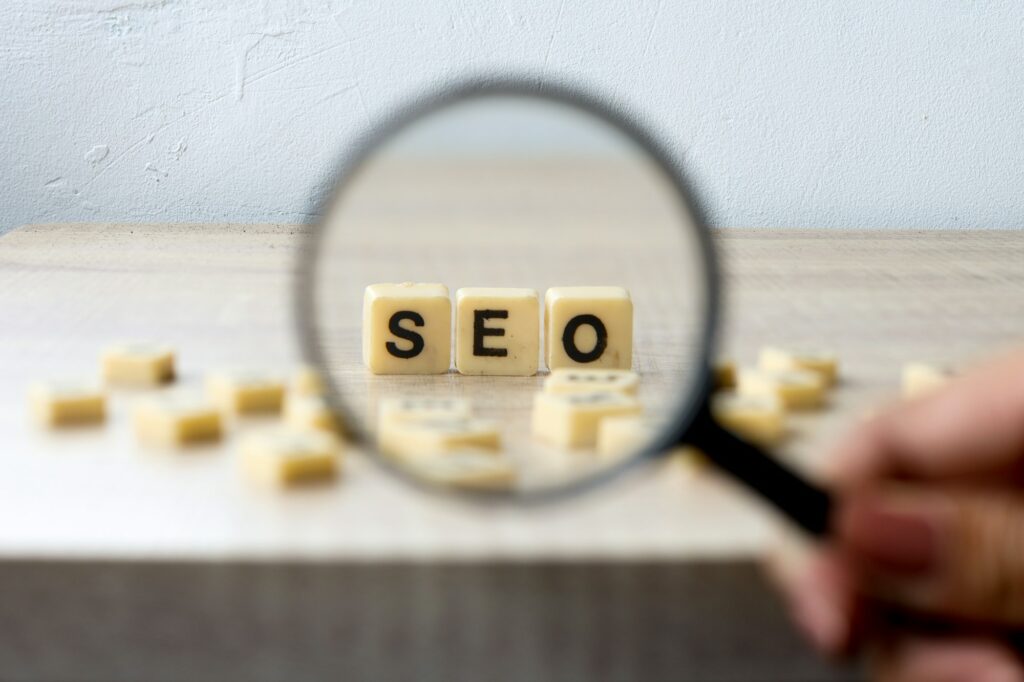Here’s a basic question that a lot of people have for us: What’s the difference between PPC (Google Ads) and Search Engine Optimisation (SEO)? So we thought we would break it down in a blog post for you all.
Google Ads or pay-per-click ads
Google Ads are search results that are generally seen at the top or bottom of the search engine results pages. You will note these are identified by the word “Ad” placed before the display URL in each listing.
Google ads require ad spend investment and are charged on a pay-per-click basis. You determine a list of keywords you’d like to target (think the words your audience are searching for on Google to find your service), then set a daily limit and the system auto bids against competitors who are targeting the same keywords as you. This determines who’s search ad is listed in the top or bottom of the search engine page paid listings.
Google Ads is a way to quickly establish a presence at the top of search engine rankings – especially if your organic search rankings are low.
Google Ads management is a service we offer, where we will analyse your market, your competition, your target keywords and help you establish a budget. We will set up, manage and continually optimise your ad campaigns to get results. Learn more about this service here.
SEO
SEO (Search Engine Optimisation) strategy and tactics can only help you to reach the top of the organic search rankings. Organic search engine rankings are the ones seen below the Google Ads as illustrated in the very long search results page image below:
You do not and cannot pay Google to reach the top of the organic listings but businesses keen to reach the top of the organic listings invest time and resources into SEO by constantly optimising the onsite and offsite SEO.
Both onsite and offsite SEO is important in terms of what the search engine algorithm is looking for when it determines what sites rank highest for keyword searches.
ONSITE SEO:
- Relevant web content and blogs
- Relevant use of keywords
- Titles and tagging
- Headings
- URL structure
- Meta description
- Page load speed
- ALT text
- SSL Encryption
OFFSITE SEO:
- Backlinks
- Leveraging links from social media and youtube
- Google accounts (Google Analytics, Google My Business, Reviews etc.)
SEO requires a far more robust and technical SEO service to really climb the rankings and stay there.
IMPORTANT THINGS TO KNOW ABOUT AN SEO SERVICE
SEO is an ongoing requirement – it is unfortunately not a set-and-forget process because your competitors are constantly working on their SEO to reach the top rankings and stay there, and the search engine algorithms are constantly changing – so SEO is an ongoing requirement. If you aren’t actively and constantly working on your onsite and offsite SEO, you simply won’t be competitive with organic search engine rankings.
It is also important to understand that SEO is also not a quick strategy. It is a long-term investment and takes time for results to be achieved once you start. As such, it’s important to have realistic expectations. An SEO service can generally deliver some improvement in your organic search engine rankings within 6-12 months but may be longer depending on how competitive your market is.
The importance of Google reviews
Your Google My Business Reviews are important for your search engine marketing strategy, as positive reviews send a strong signal to search engines that you offer expertise, authority, and trust. It also lets prospective clients know that you offer a good service so helps with the conversion of traffic to leads.
If you have negative reviews this is a difficult but not insurmountable challenge to overcome, but it is not a reason to disregard working on the rest of your SEO. In fact it is probably a reason to put more time and effort into the rest of your SEO. Remember Reviews are just one factor that search engine algorithms take into account out of over 200 other factors!
In order to manage your reviews and try to keep your stars score high, we suggest:
- Confirm any of the negative reviews are actual customers. If not, report them to Google in your Google My Business Reviews.
- Check to see if their review seems to violate Google policies. This includes fake and unfair reviews which you can flag the review as inappropriate.
- If the review is a fair representation of the client’s experience with your business you may need to wear it. We recommend you respond politely and apologetically for their experience, and ask them to make contact to discuss and resolve the issue.
- Aim to get more positive reviews and increase your star ranking and push the negative reviews down the list. Our recommendations on how to achieve this:
- Provide a great customer experience!
- Request reviews by adding a link to your Google Reviews to your client invoices, end-of-year reports etc. You could even offer an incentive (but not a bribe) such as a small gift or discount for positive reviews.
- Have key staff reach out to clients with a request for them to complete reviews – we provided Romina with email content to do this several months ago.
- When a client provides you with good feedback, respond with a request for them to review you! Asking when they are happiest is the most likely time they will review you.
- Get your team on board with requesting reviews from their client contacts.
Want to know more? Here’s a blog post we wrote about how to manage online reviews for your business.
We hope this helps to clear up the world of search engine marketing for you! Feel free to contact or book a meeting with us on the details below should you have any questions or wish to discuss further.






